With its long history of ethnic migrations and invasions, it should come as no surprise that Southeast Asia is an incredibly diverse region, home to a countless number of distinct ethnic groups and tribes. The sheer number of tribes is staggering, and each approaches life in Indochina in their own unique way. Spending time visiting the various ethnicities by trekking out to remote villages or staying in minority-majority towns is a great way for guests to get up close and personal with the many different cultures.
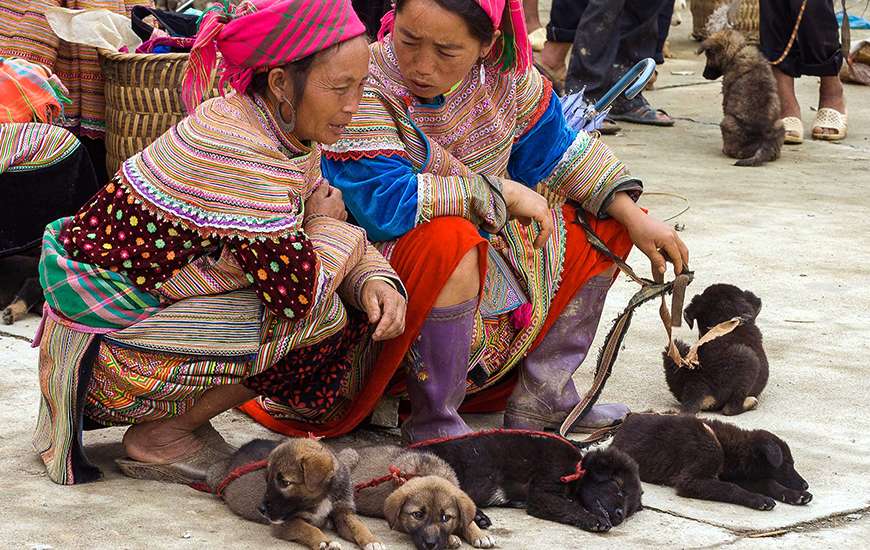
Two ethnic minority women and their puppies.
In Vietnam, the Northern Mountains is the clear winner in terms of ethnic diversity, both in density and sheer number. Here the Hmong and Tay people form the largest populations. The Hmong, also prevalent in Northern Laos and Thailand, constitute one of the biggest ethnic minorities in Southeast and East Asia, and their history in the region stretches back thousands of years, as they slowly spread from their original homeland around the Yangtze River in Southern China.
Hmong society is structured around clans, with each of the eighteen clans serving as giant extended families for its members, supporting each other and working together as a community. One especially good time to visit a Hmong village or town is during Hmong New Year. Taking place in November or December, it’s a time of great celebration and a wide range of activities. Anything from songs and dances to bull fights to traditional Hmong courtship rituals take place during the 10 day festival. These courtship rituals are especially interesting, as it takes the form of a sort of ball game played between the couples, and many young American Hmong return home for this purpose.
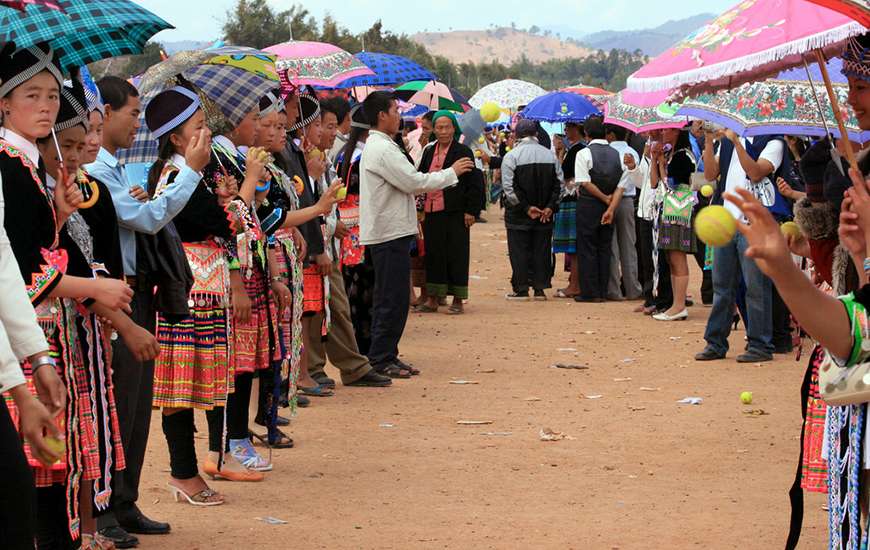
The H’mong courting ball-game in progress.
Meanwhile, the Tay, numbering roughly 1.6 million people, is Vietnam’s second largest Ethnic group, following the Viet themselves. Making their home primarily in the Northeast, the Tay are primarily farmers, cultivating rice, maize and sweet potatoes, among other products. A great location to see some authentic and traditional Tay life is Ba Be National Park, where tourism is carefully managed to protect the culture.
The Tai Dam is another culture spread throughout the Northern parts of Vietnam, Laos, and Thailand, forming the third largest ethnic group in Vietnam.
Along the fertile coastal plain of Central and Southern Vietnam, numerous groups of Chamic speakers reside. Largest among them are the Cham itself, who were the original inhabitants of this area before the Viet from Northern Vietnam conquered it. Their legacy is easily felt in the architecture of cities and ruins throughout the region.
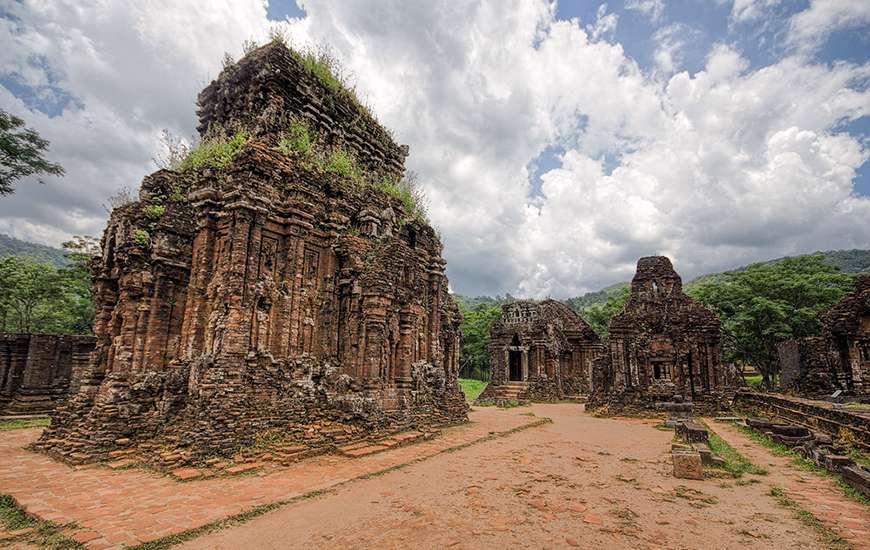
Central Vietnam is filled with ancient Chamic ruins.
Up in the Central Highlands, and straddling both sides of the border with Laos, many villages belonging to the Katu and Alak peoples can be found. Both groups construct their houses on stilts, and practice their traditional animist faith.
Continuing with Laos, here the Khmu form by far the largest group other than the Lao themselves, constituting 11% of the total population. They mostly reside in the 10 Northern Provinces, and even form an outright majority in five of them (Luang Prabang, Phongsaly, Oudomxay, Bokeo and Luang Namtha Provinces). The Khmu were the original inhabitants of Northern Laos, and perhaps one of the first groups of people to enter Indochina as a whole. Khmu culture places a heavy emphasis on spirits, and is passed down through an oral storytelling tradition.
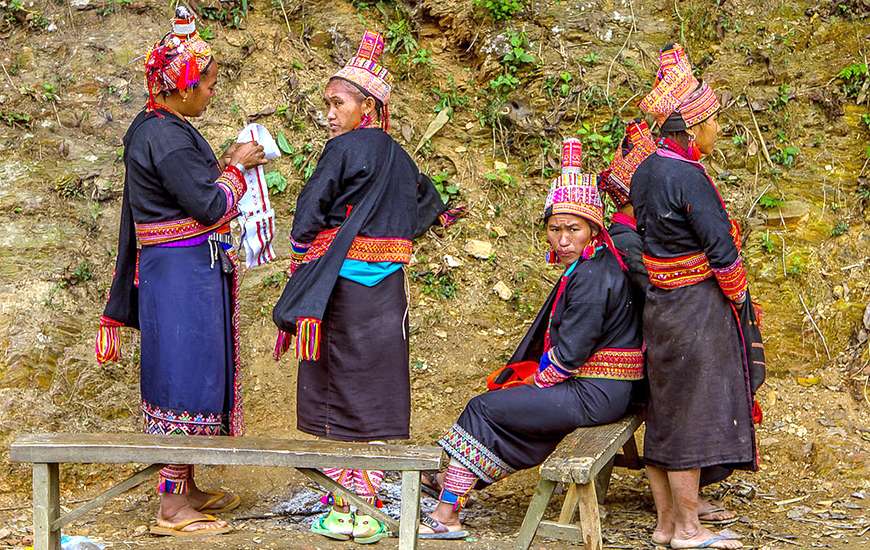
Some Khmu women in Laos.
In Northern Thailand, other than the aforementioned Hmong ethnicity, there is also a sizeable population of Akha (also present in smaller numbers in Laos and Vietnam). The Akha are perhaps most well-known for their unique style of headdresses worn by women, signifying their age and marital status. Traditionally a semi-nomadic people, many Akha villages are constructed to be temporary, shifting location when the tribe decides to move to new land.
The Thai borderlands are another great place to experience minority cultures. Along the border with Myanmar there are numerous Karen villages, having settled here after migrating from Myanmar. The biggest concentration of Karen people in Thailand is in Chiang Mai and Mae Hong Son Provinces. There are also large groups of Muslim Malays in the country’s extreme south, but instability has made the region perilous and hard to visit.
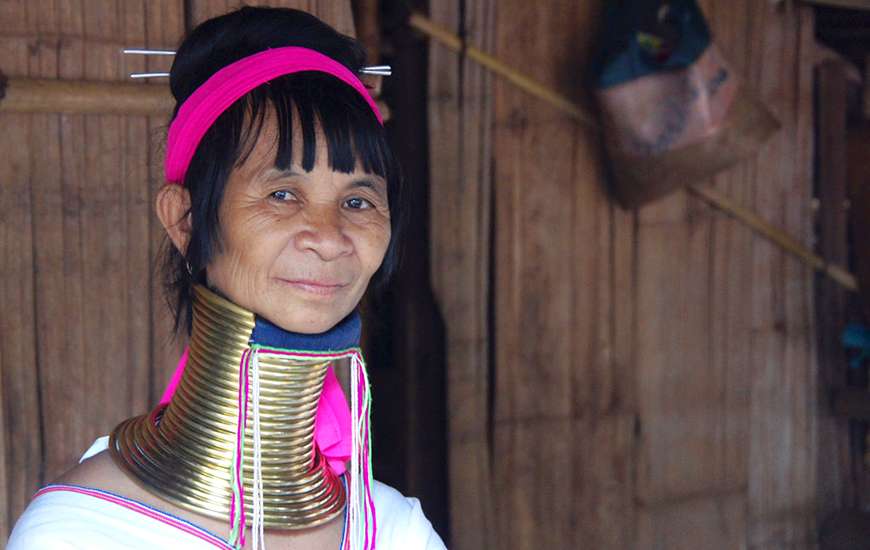
An Akha woman showing off her traditional neck-rings.
Surrounding Cambodia, in Eastern Thailand, and Southern Vietnam in the Mekong Delta Region, are several large populations of ethnic Khmer (Cambodians). Having settled here centuries and millennia ago during the Khmer domination of the region, they still practice Khmer culture, which you can then experience even if you’re not visiting Cambodia itself.
With 90% of its population of Khmer descent, Cambodia is far less ethnically diverse than its neighbours. However, in the Eastern Highlands, particularly Mondulkiri and Ratanakiri provinces, Khmer Loeu or “Upland Khmer” form the majority, and are considered to be the oldest inhabitants of modern Cambodia. Here you can go on many a trek to remote villages still practicing their traditional way of life. There is also a significant population of Sino-Khmer (Chinese Cambodians) in Phnom Penh, where they dominate the middle and upper classes, as well as the entertainment, financial and political sectors. Similarly, there is a large population of Sino-Thai in Bangkok.
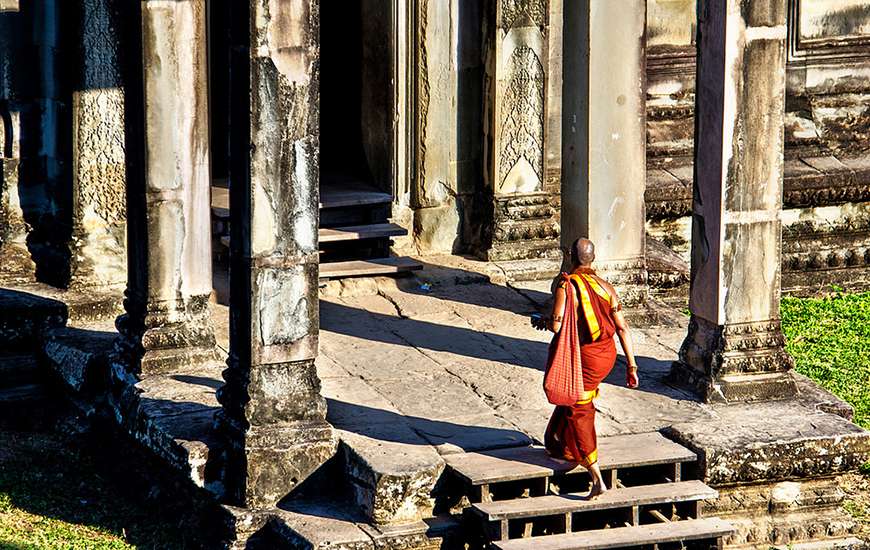
Buddhism is an integral part of Southeast Asian culture, and saffron-clad monks can be seen almost anywhere.
In short, Southeast Asia is one of the most ethnically diverse regions in the world, and you could spend a lifetime introducing your travellers to the hundreds of different cultures to be found here.